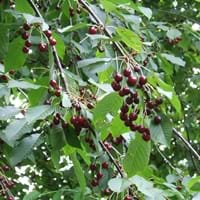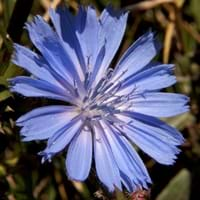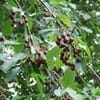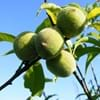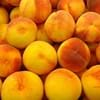Life Span
Perennial
Perennial
Type
Fruit
Flowering Plants, Shrubs, Vegetable
Origin
Hybrid origin, Europe, Asia
Mediterranean
Types
Fruit
Belgian Endive, Red Belgian Endive, Curly Endive (a.k.a. Frisee), Escarole, Radicchio (Chioggia) and Radicchio (Chioggia)
Habitat
Temperate Regions
Grassland, Mediterranean region, Wild
USDA Hardiness Zone
4-8
3-9
Sunset Zone
A2, A3, 1a, 1b, 2a, 2b, 3a, 3b, 4, 5, 6, 7, 8, 9, 14, 15, 16, 17
A1, A2, A3, H1, H2, 1a, 1b, 2a, 2b, 3a, 3b, 4, 5, 6, 7, 8, 9, 10, 11, 12, 13, 14, 15, 16, 17, 18, 19, 20, 21, 22, 23, 24
Habit
Upright/Erect
Clump-Forming
Flower Color Modifier
Bicolor
Not Applicable
Fruit Color
Red, Dark Red
Brown
Leaf Color in Spring
Dark Green
Green
Leaf Color in Summer
Dark Green
Green
Leaf Color in Fall
Dark Green
Green
Leaf Color in Winter
Light Green
Green
Leaf Shape
Simple lobed or unlobed
Oblong
Plant Season
Spring, Summer, Fall
Summer
Sunlight
Full Sun, Partial Sun
Full Sun, Part sun
Growth Rate
Medium
Medium
Type of Soil
Clay, Loam, Sand
Loamy, Sandy
The pH of Soil
Acidic, Neutral, Alkaline
Acidic, Alkaline, Neutral
Soil Drainage
Well drained
Well drained
Tolerances
Drought
Not Available
Where to Plant?
Ground
Ground
How to Plant?
Semi-hardwood and hardwood cuttings
Seedlings
Plant Maintenance
Medium
Medium
Watering Requirements
Keep ground moist, Use Mulches to help prevent water loss during hot and windy weather
Keep the ground moist but not water-logged, Prefer drip-irrigation instead of Over-head watering, Requires regular watering, Requires watering in the growing season
In Summer
Lots of watering
Lots of watering
In Spring
Moderate
Moderate
In Winter
Average Water
Average Water
Soil pH
Acidic, Neutral, Alkaline
Acidic, Alkaline, Neutral
Soil Type
Clay, Loam, Sand
Loamy, Sandy
Soil Drainage Capacity
Well drained
Well drained
Sun Exposure
Full Sun, Partial Sun
Full Sun, Part sun
Pruning
Remove damaged leaves, Remove dead branches, Remove dead leaves
Cut or pinch the stems, Prune prior to new growth, Prune to stimulate growth, Remove dead or diseased plant parts, Remove deadheads
Fertilizers
All-Purpose Liquid Fertilizer
All-Purpose Liquid Fertilizer
Pests and Diseases
Birds
Aphids, Loopers, Root rot, Viruses, Worms
Plant Tolerance
Drought
Drought
Flower Petal Number
Single, Double
Not Available
Foliage Texture
Medium
Medium
Foliage Sheen
Glossy
Matte
Attracts
Birds
Butterflies
Allergy
Anaphylaxis, gastro-intestinal problems, Itchiness, Skin irritation
Not Available
Aesthetic Uses
Beautification, Bouquets, Informal Hedge, Landscape Designing, Showy Purposes, Wild gardens
Not Used For Aesthetic Purpose
Beauty Benefits
Not Available
Not Available
Environmental Uses
Air purification
Air purification
Medicinal Uses
anti-inflammatory, Anti-oxidant, Gout, Insomnia, Soothing and relieving pain
Cancer, Digestive disorders, Inflammation, Liver problems, Stomach pain
Part of Plant Used
Flowers, Fruits
Leaves, Root
Other Uses
Air freshner, Beneficial species for attracting pollinators, Cake, Edible syrup, Oil is used in perfume, soaps, creams, etc., Used to make juice
Used as an ingredient in coffee
Used As Indoor Plant
No
No
Used As Outdoor Plant
Yes
Yes
Garden Design
Edible, Feature Plant, Fruit / Fruit Tree
Not Available
Botanical Name
PRUNUS cerasus 'Northstar'
Cichorium intybus
Common Name
Northstar Tart Cherry, Pie Cherry 'Northstar'
Blue daisy, blue dandelion, blue sailors, blue weed, bunk, coffeeweed, cornflower, hendibeh, horseweed, ragged sailors, succory, wild bachelor's buttons, and wild endive
In German
Northstar Tart Cherry
Chicoree
In French
Northstar Tart Cherry
chicorée
In Spanish
Cereza
achicoria
In Greek
Northstar Tart Cherry
ραδίκι
In Portuguese
Northstar Tart Cherry
chicória
In Polish
Northstar Tart Cherry
cykoria
In Latin
Northstar Tart Cherry
pancratium
Phylum
Magnoliophyta
Magnoliophyta
Class
Magnoliopsida
Magnoliopsida
Family
Rosaceae
Asteraceae
Clade
Angiosperms, Eudicots, Rosids
Angiosperms, Asterids, Eudicots
Tribe
Not Available
Cichorieae
Subfamily
Not Available
Cichorioideae
Number of Species
Not Available
Not Available
Season and Care of Northstar Tart Cherry and Chicory
Season and care of Northstar Tart Cherry and Chicory is important to know. While considering everything about Northstar Tart Cherry and Chicory Care, growing season is an essential factor. Northstar Tart Cherry season is Spring, Summer and Fall and Chicory season is Spring, Summer and Fall. The type of soil for Northstar Tart Cherry is Clay, Loam, Sand and for Chicory is Loamy, Sandy while the PH of soil for Northstar Tart Cherry is Acidic, Neutral, Alkaline and for Chicory is Acidic, Alkaline, Neutral.
Northstar Tart Cherry and Chicory Physical Information
Northstar Tart Cherry and Chicory physical information is very important for comparison. Northstar Tart Cherry height is 180.00 cm and width 240.00 cm whereas Chicory height is 3.00 cm and width 1.50 cm. The color specification of Northstar Tart Cherry and Chicory are as follows:
Northstar Tart Cherry flower color: White
Northstar Tart Cherry leaf color: Dark Green
Chicory flower color: Blue
- Chicory leaf color: Green
Care of Northstar Tart Cherry and Chicory
Care of Northstar Tart Cherry and Chicory include pruning, fertilizers, watering etc. Northstar Tart Cherry pruning is done Remove damaged leaves, Remove dead branches and Remove dead leaves and Chicory pruning is done Cut or pinch the stems, Prune prior to new growth, Prune to stimulate growth, Remove dead or diseased plant parts and Remove deadheads. In summer Northstar Tart Cherry needs Lots of watering and in winter, it needs Average Water. Whereas, in summer Chicory needs Lots of watering and in winter, it needs Average Water.
